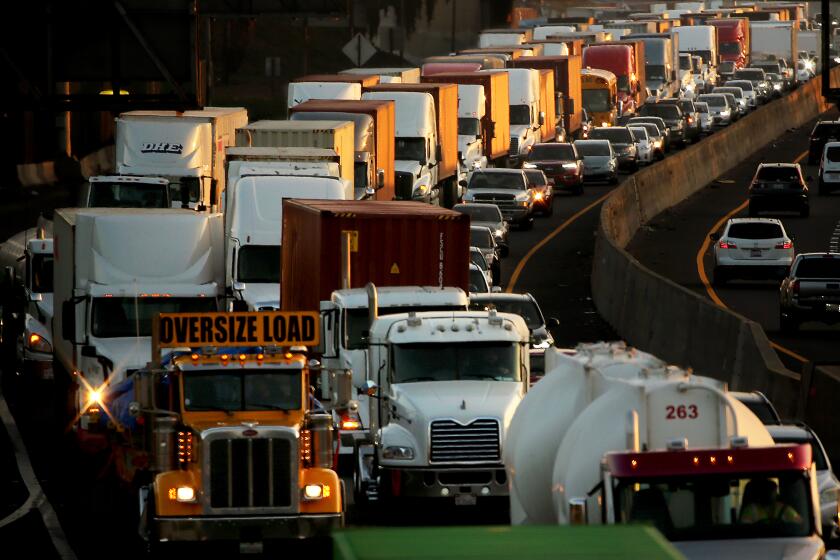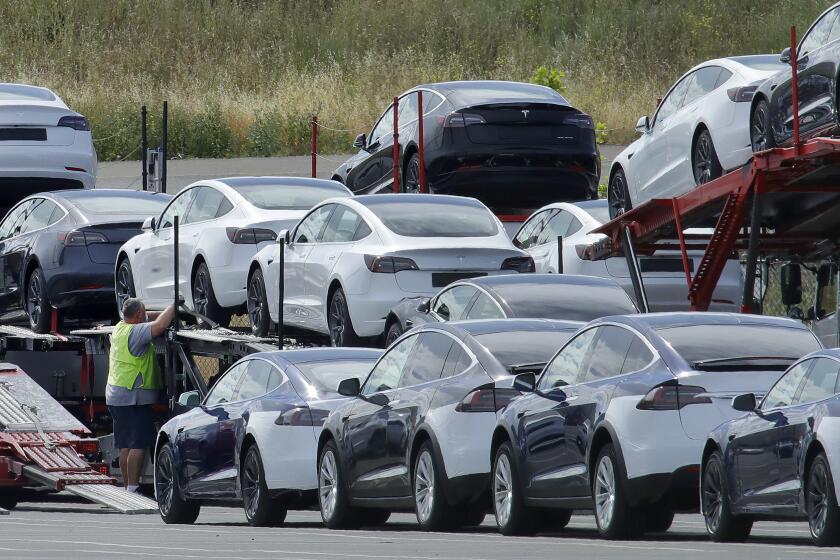Column: From the state Assembly to the California Air Resources Board, Hector De La Torre makes his mark
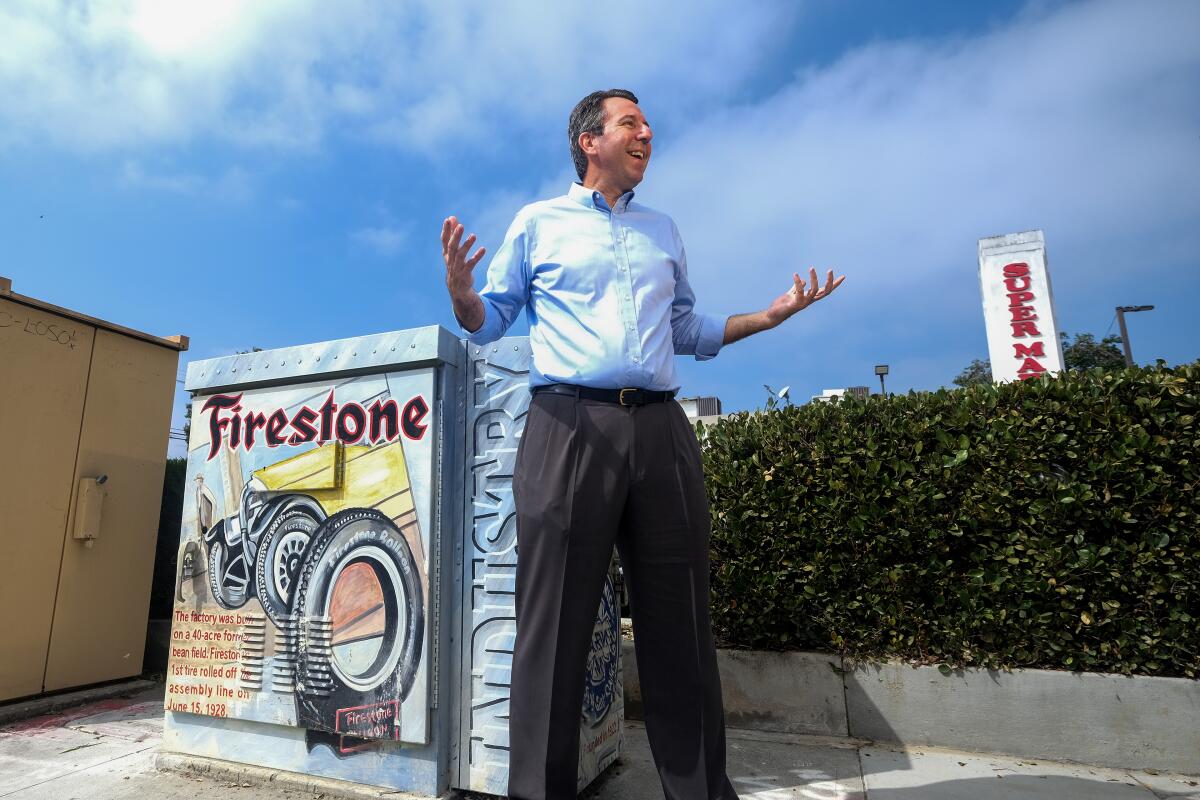
- Share via
Gray hairs sprout near Hector De La Torre’s temples, and his gait is slower than before.
But the longtime southeast Los Angeles County politician still looked every part the civic boy wonder when I met him on a recent morning in his hometown of South Gate.
The 56-year-old first drew notice in the late 1990s as a councilmember who helped flush out the corruption that had plagued the city as it went from majority white to majority Latino. Voters then sent him to the state Assembly from 2004 to 2010.
That was the last elected position he held. But his influence has only grown, and not just in southeast L.A.. Since 2011, he has served on the California Air Resources Board, a powerful agency better known as CARB that is trying to make the state a worldwide leader in reducing emissions — and fundamentally changing the way residents live.
No more new cars with combustible engines after 2035? Blame CARB. Banning chroming for decorative purposes? CARB. Mandated zero-emission engines for short-run ferries, locomotives and an ambitious push to make California carbon-neutral by 2045? CARB, CARB, CARB — and this is just a small sample of what De La Torre and his fellow board members have enacted in the last two years, to much controversy.
I’ve written in this columna about how CARB’s actions too often come off as pie-in-the-sky wokery that doesn’t seem to consider how working-class folks might be able to afford living in a purified paradise. That’s why I wanted to meet De La Torre, who’s now the second-longest serving CARB member.
If anyone can persuade me and my fellow fossil fuel reprobates to give up our gas-powered lawnmowers, luminous bumpers and fleets of carburetor-powered cars, it’s him.
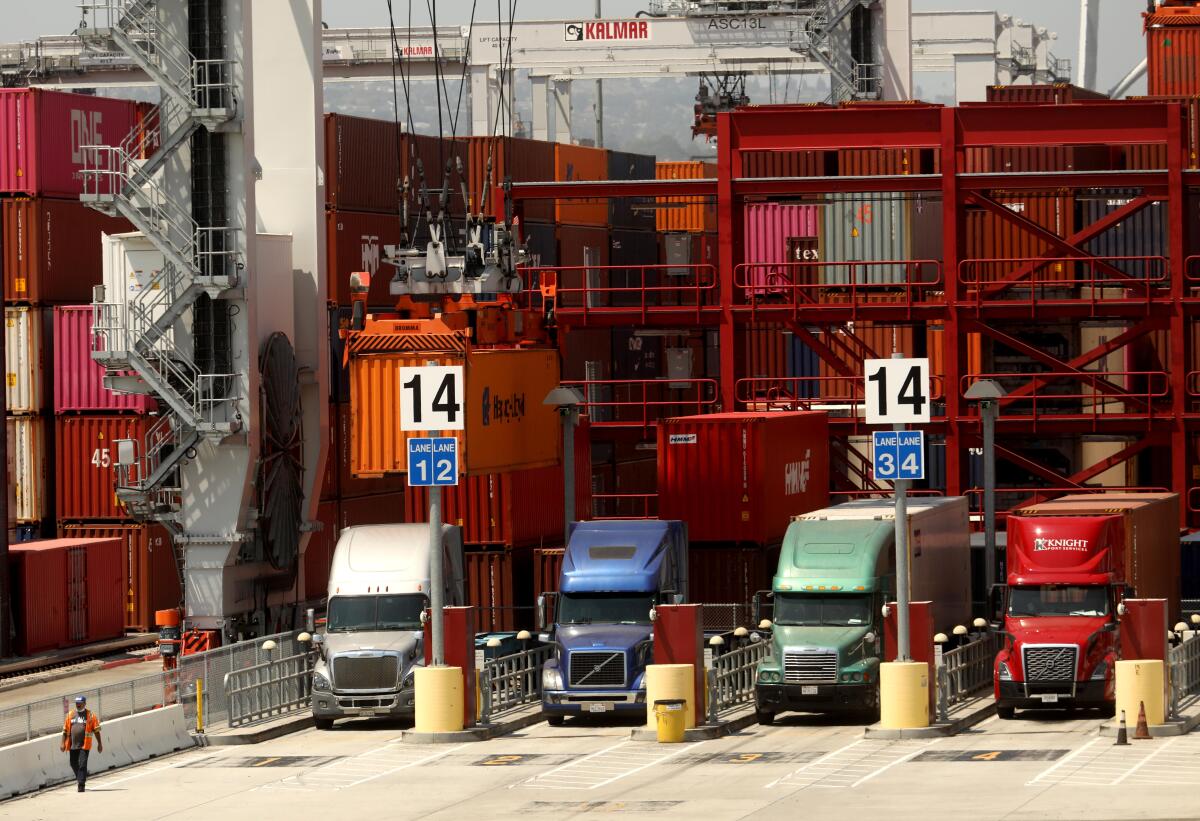
He’s the son of Mexican immigrants from Jalostotitlán, Jalisco, a town whose Southern California diaspora is as rancho libertarian as it gets. His grandfather was sprayed with DDT entering the country to work as a bracero in the 1950s; a great-great-uncle was San Toribio Romo, a Catholic martyr killed by anti-clerical government forces in Mexico in the 1920s.
“When you have a saint in the family,” De La Torre chuckled, “it’s hard not to want to do the right thing.”
We stood at the corner of Tweedy Boulevard and California Avenue, where two murals hailing South Gate’s industrial heyday covered two electrical boxes. They were the companies of De La Torre’s youth — Firestone, Bell Foundry, GM, Maas Chemical — that created middle-class jobs but turned southeast L.A. into Southern California’s own Rust Belt with layoffs and closures in the 1970s and ‘80s, while leaving polluted sites throughout the region.
“I tell people that we are in the middle of the next industrial revolution,” De La Torre said. Diesel trucks and buses rumbled past us. The stench of their fumes felt as thick as fog. We had to use our outdoor voices to speak above a concerto of horns and engines. “And it’s a clean revolution. There are products to be created. There is work to be done. And this time, we need to be purposeful.”
De La Torre is an accidental environmentalist. Growing up, he thought everyone else also suffered from burning lungs after playing outside for too long, and figured that asthma and breathing problems were just a way of life in Southern California. His perspective changed in the mid-1990s, when he worked as a legislative director for then-Rep. Richard Lehman of Fresno.
“I was having to engage on air pollution issues,” he said. “And when I came back home [as a South Gate councilmember], one of the first issues before me was trucking companies wanting to build warehouses. Fresno had this same issue. And my position was always, ‘No, hell no, we don’t want warehouses. We don’t want all the trucks.’ It’s bad enough as it is.”
In a marathon two-day hearing, the California Air Resources Board voted on new regulations designed to limit pollution from locomotives and cargo trucks.
In his first year in Sacramento, De La Torre introduced clean air bills, but “it was a killing field for environmental legislation. And everyone was just pulling their hair out and they’re freaking out and they’re saying, ‘Who’s responsible for this? Who’s killing these bills?’”
He and others created Green California, a coalition of environmental activists and nonprofits, to coordinate priorities. De La Torre served as their legislative point man.
“In the rest of my time in the Legislature, I’d say the worst we ever did on those bills was like 85% approval,” he said, vigorously nodding. “It completely changed the dynamic.”
The sun was beating down on us, so we moved away from the murals and stood under the shade of a nearby tree.
“It’s amazing to me that I’ve been there almost twice as long as I was in the Legislature at this point,” De La Torre said of CARB. Then-Gov. Jerry Brown originally appointed him to the board, and former Assembly Speaker Anthony Rendon reappointed him in 2018 to a six-year term. “It’s amazing to look back at everything we’ve done.”
Early on, he realized that CARB and others in California’s environmental movement wanted to implement dramatic solutions to combat climate change, while anticipating resistance from working-class constituents.
“Climate change arguments aren’t really motivating” those communities, he reasoned, “but the pollution in your community? Absolutely is.”
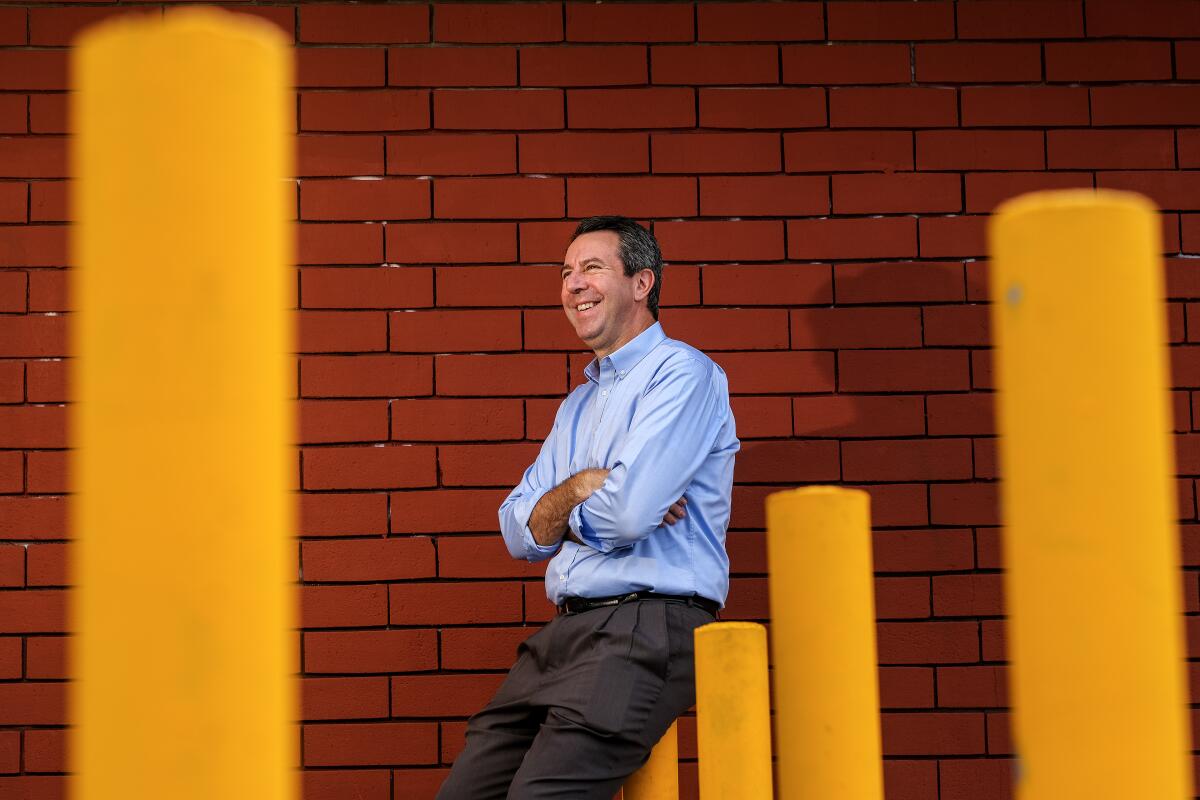
During his tenure, CARB has particularly focused on reducing air quality emissions, an emphasis that De La Torre said saves lives. He pulled out his smartphone to show me a 2012 map from that year’s Multiple Air Toxics Exposure (MATES) Study — a survey conducted every five years by the South Coast Air Quality Management District. It tracks where air pollution is heaviest in Southern California, and the map featured swaths of deep purple surrounding the 710 Freeway, which passes through southeast L.A.
This was where the carcinogenic effects of air pollution were worst, fueled primarily by diesel emissions, which are 8% of Southern California’s overall emissions but contribute more than 70% of cancer-causing particulates.
De La Torre then showed me the same map, this time from the 2021 MATES study. The deep purple swaths were almost completely gone.
Southeast L.A. on the map “is still fuchsia,” he said. “But [carcinogenic emissions have] dropped demonstrably. What’s happened in that time? Our regulations have happened in that time. That’s the only difference. People are living in the same place. Same freeways, same factories, same everything. That’s why I talk about killing diesel on CARB all the time.”
Less cancer is wonderful and all, I said, but I don’t live near the freeway. Why should I embrace regulations that mess with the type of car I drive?
He laughed and admitted that car culture has a stranglehold on California. He doesn’t drive an electric vehicle himself, because no current model can accommodate his 6-foot-5 frame. “But the market is getting there. Over 25% of new car sales in California were zero emission last [quarter]. That’s not us. That’s not our mandate. That’s the consumers making the choice.”
More than 25% of all new vehicles sold in California in the last quarter were electric vehicles. The state accounts for 34% of all EV sales in the country.
I responded that clean air regulations enacted in 2008 at the Ports of Long Beach and Los Angeles cost my father his job as an independent trucker because he didn’t have the money to modify his old rig and was too old to justify taking out a loan to buy a new one.
“We’re now incentivizing the hell out of” truckers to switch to cleaner vehicles, De La Torre replied. He mentioned CalSTART, a nonprofit funded by CARB that offers rebates to switch to greener engines. “They are oversubscribed every time they open up a pot of money for truckers. They get more applications than they have money for. So it’s happening.”
We looked toward the street, where an engine had backfired loudly.
“We’re not just throwing stuff out,” he said. “We’re not just bringing the hammer down. We’re like, ‘OK, how do these pieces go together so that we can have this marketplace and everyone can be a part of it?’”
De La Torre was never judgmental during our one-hour chat, and his final answer about Luddites like me was perfectly rational — even empathetic.
“It’s about habits. We’ve grown up with this stuff. And so we think, ‘Oh, that’s the only way to go.’ But when people say to me about how hard it is to charge cars or this or that, I tell them it’s been less than a hundred years that we have the convenience of gas stations. We act like it’s always been like this since the cavemen. No!
“We’re just making another transition to another technology, and it’s going to be a little inconvenient in the beginning. But eventually, it will be the norm, and we just adapt.”
As if on cue, a Prius scraped over a driveway as it sped up an alley. Its driver was a tatted-up man with a shaved head.
De La Torre grinned.
“A little vato is driving a hybrid. I mean, come on!”
More to Read
Sign up for Essential California
The most important California stories and recommendations in your inbox every morning.
You may occasionally receive promotional content from the Los Angeles Times.
